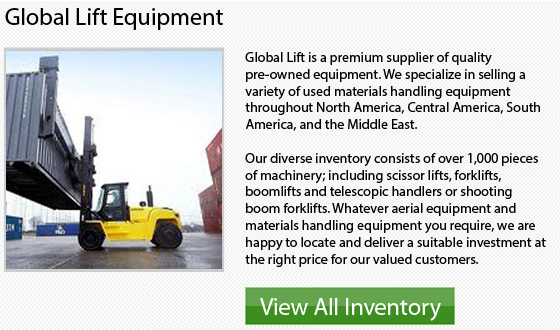
Yale Cushion Tire Trucks
Yale's Internal Combustion cushion tire model forklift has been designed and manufactured to specifically meet all the needs of numerous industry specific applications. The GM in-line 2.4L and 4.3L engines, along with the Mazda 2.0L and 2.2L in-line 4 cylinder engines are really durable, strong and efficient engines. Their design has been specially made and proven for utmost dependability and performance.
Yale Hi-Vis masts offer unsurpassed visibility and excellent construction thanks to their original design and construction. Every component has been engineered for excellent performance and extended, low-maintenance life. These models are extremely well designed to be a top-player within the industry.
Frame & Outriggers
The frame of the lift truck and outriggers must be able to handle harsh environments in order to efficiently and safely handle the daily stresses it is likely to encounter. The frames built by Yale offer utmost protection to all of the lift truck parts. Furthermore, they support the equipment and give it optimal strength and a long life.
To be able to make sure that their machines meet all the requirements and expectations of their clients, Yale frames have been subject to extensive computer, laboratory and application testing. For extra capacity and support, outriggers are welded directly to the frame. These major components must be able to successfully deal with the stresses of the most throughput reach truck situation.
Operator's Compartment
Amongst the most essential parts of the Yale trucks is their "Best-in-class" ergonomics. They offer excellent visibility, superior comfort, amazing operator comfort and low effort operation. These important features all add up to help operators keep up their productivity levels during their shift and enable operators to work more efficiently.
Yale engineers particularly focused on a spacious and ergonomically designed operator's compartment. Yale's electric steering further improves the productivity of the models. This feature provides more accurate steering control with less steering effort and further improves productivity. Having an ergonomically friendly design is very important to be able to enable operators to remain as productive as they can during the shift.